
dana- Untitled (look up)
I always wondered what the air was like that day when some smart ‘un put feather to paper and started writing about what I’m doing now (more specifically, thinking, imagining, wording, translating, picking letters, and typing as I go). Did they wake well? Did they have a hearty breakfast? A bathroom break? A caretaker, perhaps, to wash their mouths and wrap their heavy temples with herbal concoctions to elevate the inner self? Did their slumber have a name?
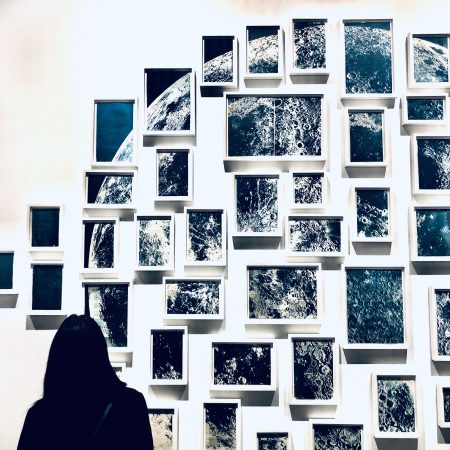
Ala Ebtekar- Thirty-six Views of the Moon, 2019. Photo by dana©
Did they rise late? Or early enough that the moon was still in the sky, low and pregnant and seemingly touchable? Did they look at it and wonder what we all do: “how many other people looked at this and thought the thoughts I’m thinking now?”?
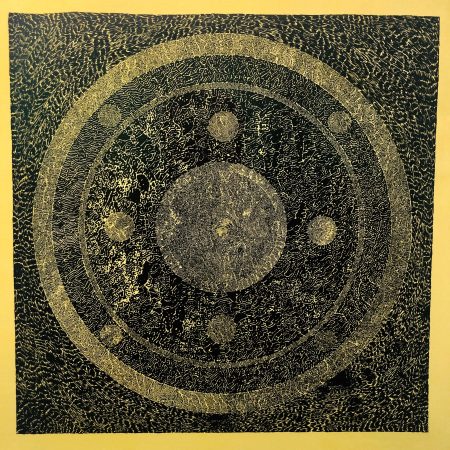
Bruce Conner- Untitled- Mandala. 1965. Photo by dana©
Or did they roll out of bed and started musing on the depths of humors and the alchemy of the soul, only to then stare into a blank page, deep in a writer-philosopher’s block?
Seriously, WHO starts their day with theories of the word?
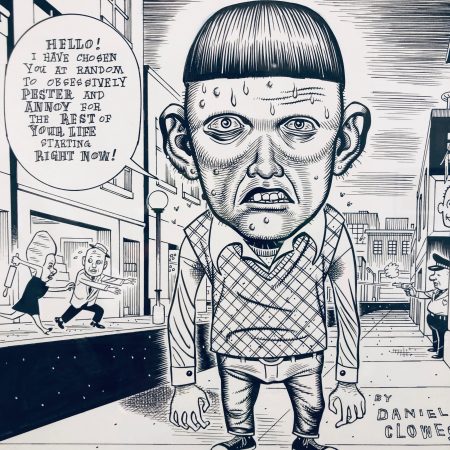
Daniel Clowes- Untitled. 1992. Photo by dana
Why, I’m glad you asked. Saussure, that’s who (Swiss, somber, smart, solitary, likes dogs and Sanskrit; you can call him Ferdie). About 100 years ago, Ferdie revolutionized linguistics and went on to be the most quoted person who didn’t publish much while alive- at least for a while. I won’t bore you with Saussure’s theoretical reconstructions of the Proto-Indo-European language vocalic system, or the ways he influenced both Levi-Strauss’ theory of myths and Chomsky’s transformational grammar- we can talk about those some other time.
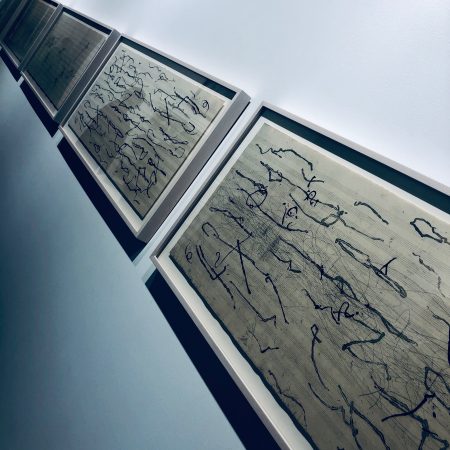
David Ireland- A variation on 79, side to side passes of a dumbball, dedicated to the memory of John Cag 1912-1992. 1993. Photo by dana
Semiology is part of semiotics and together they define, in short, the elements of communication. We need some thing (like, say, a chair, or a phenomena) that is easy to perceive; we need some understanding of what it is (a mental image of its significance- something to sit on); we need a name for it (saying “chair” or a signing it are both acceptable as long as they’re alway and only used for, well, a chair). And, if we are trying to communicate at a symbolic level, we—of course—need symbols (image/icon of the chair, or a string of letters/signs that are used solely to signify a chair).
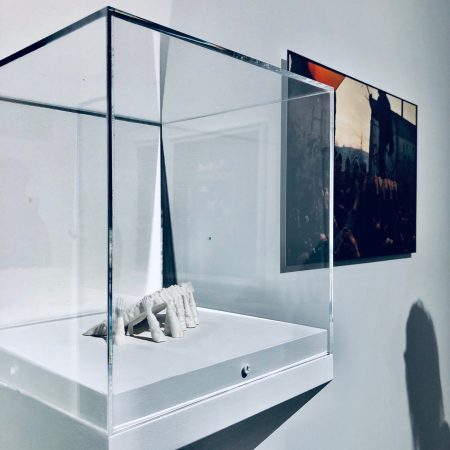
Hank Willis Thomas Untitled; Alfred Yaghobzadeh- Tearing down the Berlin Wall at Brandemburg Gate. Photo by dana
Complicated?
Add to this the intention (do I really want to make you understand? And do you really want to see what I have to say?), motivation (why in the world am I talking about chairs now, anyway??), and interference (if “chair” is slang for something else; if I’m drawing and you can’t see or the phone signal is poor and you can’t hear me; if we don’t both speak the same language) and what you get is a highly abstract—but highly organized—notion of how we go from something palpable I see (a chair) to you having a very clear picture, in you head, of the object I am talking about.
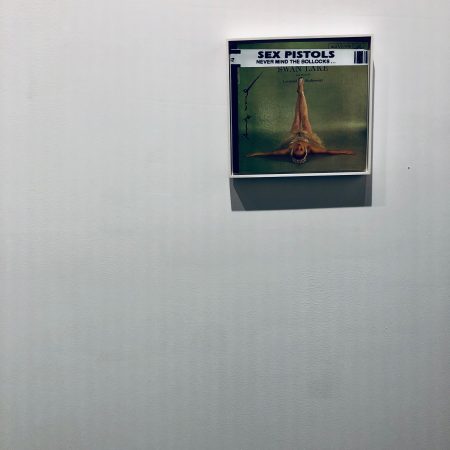
Richard Prince Photo by dana
In art, luckily, the process is jumbled and (roughly) goes the other way around: to our delight, the creator starts with a story they look to materialize, then package, then name; when naming doesn’t happen or is, in and of itself, a new story, the communication becomes circular and the meaning, well, becomes our job to create. Hans Hendley of Hendley Perfumes threads, a fine such line between object, subject, and significance in many of the fragrances he creates—and Hendley Perfumes Untitled is, literally, an impeccable exercise in olfactory semiotics.
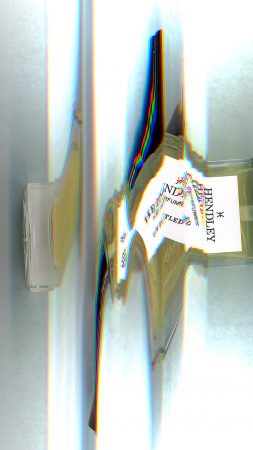
Hendley Perfumes Untitled Courtesy of Hans
Neutral, unequivocal, and always consistent with itself, Hendley Perfumes Untitled is one of the few fragrances I know that would, indeed, suffer from being indicted any other (more descriptive) name. It opens with a condensed blast of raw cedar-like accords which morph quickly into powdery woods, only to translate clearly into a clean, carroty, honest orris; at this stage, the fragrance is sparkling and alive, like words before they find their sentence. The second phase, textural, is aromatic: warm greens settle in, arranging themselves in a topic: clary sage; bits of bay; some white tea; vague artemisia, tobacco flowers, and almondy whiffs. Lastly, an airy ambrette joins a creamy vetiver to finally provide the meaning—and so they hum, together, universal, luminous, and as free as an open-ended title.
Official notes: sandalwood, musk, iris, vetiver
Disclaimer: Sample of Hendley Perfumes Untitled kindly provided by Hans Hendley. My opinions are my own.
–dana sandu, Contributor
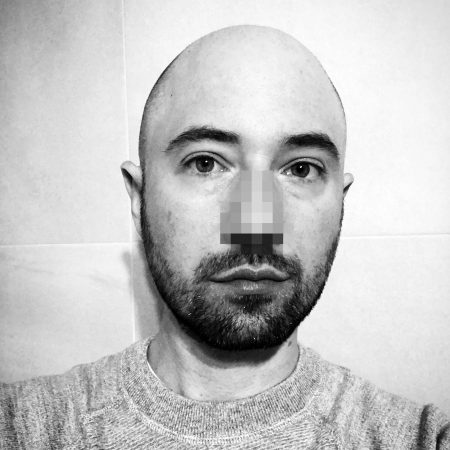
Hans Hendley via Hans
Editor’s Note: CaFleureBon was one of the first sites to take notice of Hans Handley in 2014. You can read his Profiles in American Perfumery here. Sr. Editor Gail Gross awarded Blond a best of 2018 award. Michelyn awarded Hans a Rising Star award in 2016 and Amora was one of her best of scent 2016. Hans has also been part of our perfumer’s workshop series “Perfume Organs”. –Michelyn Camen, Editor in Chief
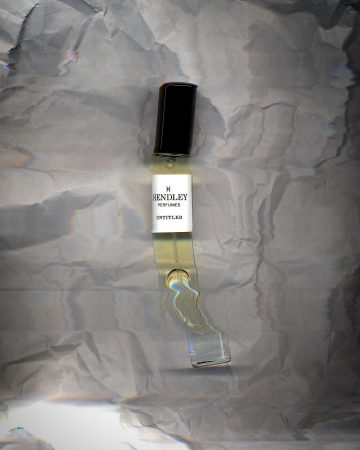
Thanks to the generosity of Hans Hendley we have a 9 ml travel spray of Untitled for one registered reader anywhere in the world
OR
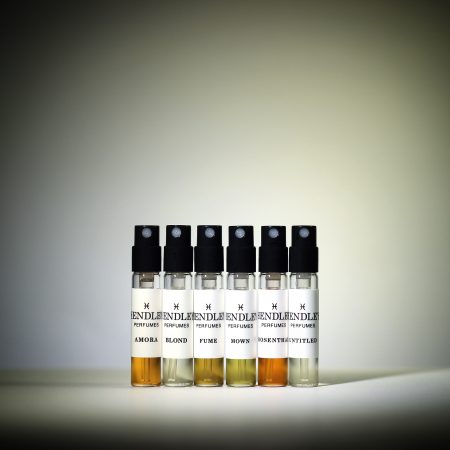
(photo via Hans)
Hendley Perfumes discovery set which includes 1.5 ml sprayers of Amora, Blond, Fume, Mown, Rosenthal & Untitled (photo via Hans)
To be eligible, please leave a comment saying what sparks your interest in Hendley Perfumes Untitled based on dana’s review, if you would like to win the 9 ml Untitled or the Discovery set and where you live. Draw ends 6/10/2019
Follow us on Instagram @cafleurebon @Hendleyperfumes @a_nose_knows
We announce the winners only on our site and on our Facebook page, so like Çafleurebon and use our blog feed … or your dream prize will be just spilled perfume.
